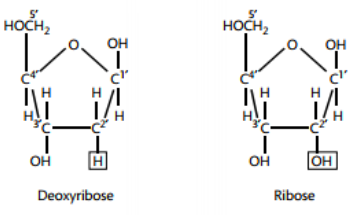


#NITROGEN BASE PLUS SUGAR PHOSPHATE BACKBONE STRUCTURE CRACK#
Then, Rosalind Franklin and Maurice Wilkins produced the x-ray crystallography photographs ultimately used by Watson and Crick to crack the genetic code. Later research by Russian scientist Phoebus Levene and Austrian Erwin Chargaff served to unearth more information about the DNA molecule. However, the first identification of DNA was actually made in 1869 by Frederich Miescher, a Swiss scientist. Scientists James Watson and Francis Crick are often credited to have discovered the DNA model in the 1950s. CC- CC0 1.0 Universal Public Domain Dedication. You can get a feel for how the two strands are woven together by twisting two pipe cleaners. The sides are commonly known as the sugar phosphate backbone. The rungs on the ladder are the nitrogenous base pairs connected by a hydrogen bond (bases adenine and thymine or guanine and cytosine) while the sides are alternating sugar molecules and phosphate groups bonded together. The Structure of the DNA ModelĮach DNA single strand comprises three parts:ĭNA molecules have two strands that coil around an axis, forming a twisted ladder shape, commonly known as a double helix. This article takes us through the structure of a DNA molecule and the history behind the discovery of this structure. Their work was based on the x-ray crystallography structures collected and analyzed by another scientist, Rosalind Franklin. The first accurate DNA double helix structure model was unveiled in 1962 and credited to two scientists, James Watson and Francis Crick. Moscow International Business Center, Evolution Tower. Designers and engineers from all around the world have even been inspired by the shape to design various structures, including the Evolution Tower in Moscow Russia and various statues and stairways.

The double-helical shape reminiscent of a twisting ladder can be recognized by many people outside of the scientific professions. The structure of a DNA model is an interesting one. Refinements to Watson and Crick’s model.Watson and Crick and the double helix DNA model.Further study on the structure of the DNA model.


 0 kommentar(er)
0 kommentar(er)
